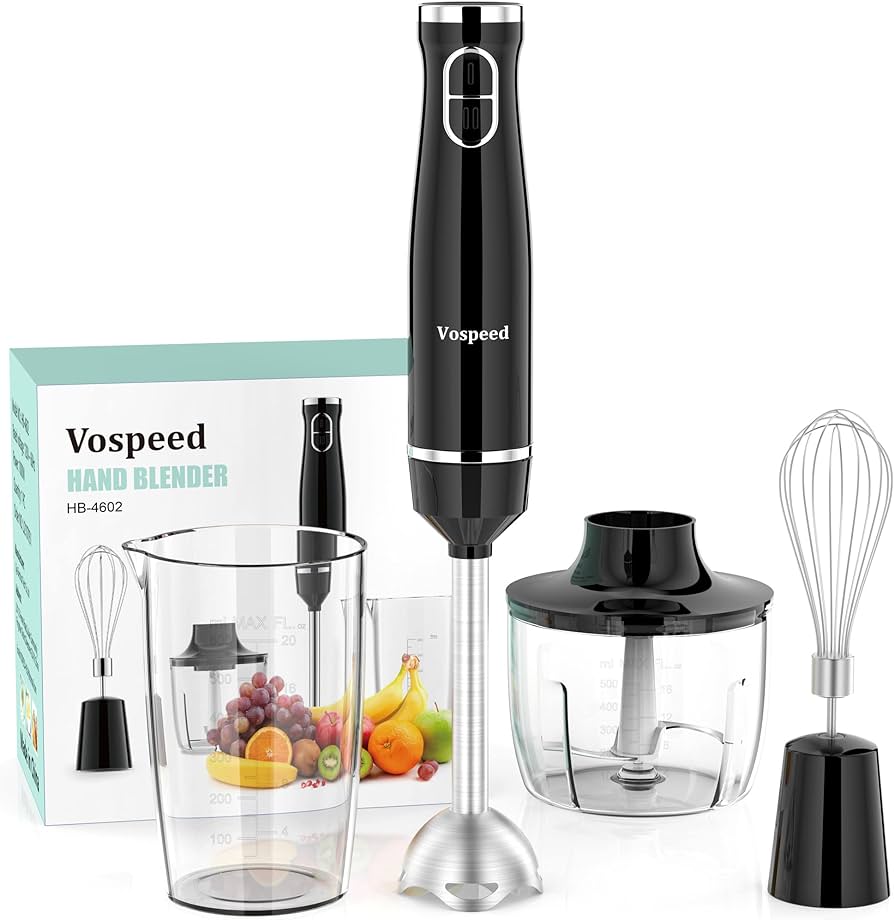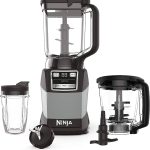Introduction:
An immersion blender, also known as a hand blender or stick blender, is a versatile kitchen tool designed for blending, mixing, and pureeing directly in the container you are using. This comprehensive guide explores how to use an immersion blender effectively, including preparation, techniques, safety tips, and maintenance. By following these guidelines, you can maximize your immersion blender’s potential, ensuring smooth and consistent results every time.
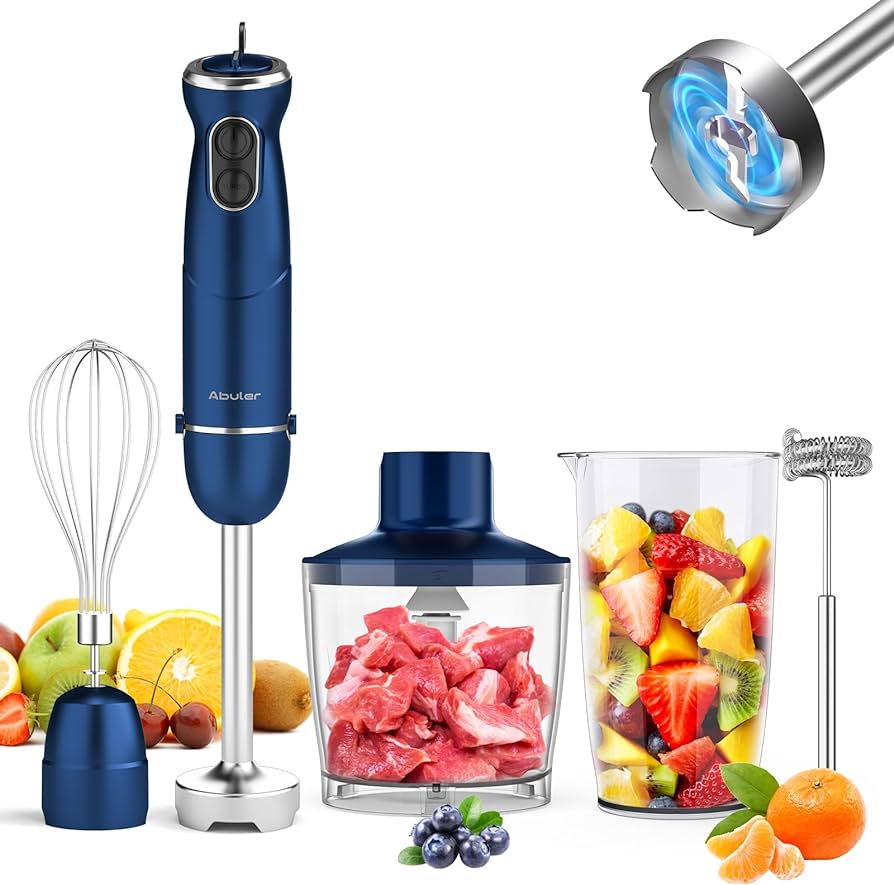
How to Use an Immersion Blender:
What Are the Steps and Tips for Effective Blending?
Understanding Your Immersion Blender:
What Are the Components and Functions?
Familiarizing yourself with the components and functions of your immersion blender is essential for effective use.
Main Components:
Parts and Attachments:
Motor Unit: The motor unit is the top part of the immersion blender, housing the motor and control buttons. It is generally detachable from the blending shaft for easy cleaning.
Blending Shaft: The blending shaft is the long, narrow part with blades at the end. It is designed to be submerged in the food or liquid you are blending.
Accessories: Some immersion blenders come with additional attachments such as a whisk attachment, chopper, or beaker. These attachments expand the functionality of the blender.
Control Functions:
Speed and Settings:
Power Button: The power button starts and stops the blender. Most models feature a simple push-button operation.
Speed Settings: Many immersion blenders offer multiple speed settings, allowing you to adjust the blending speed based on your needs. Some high-end models include turbo or pulse functions for extra power.
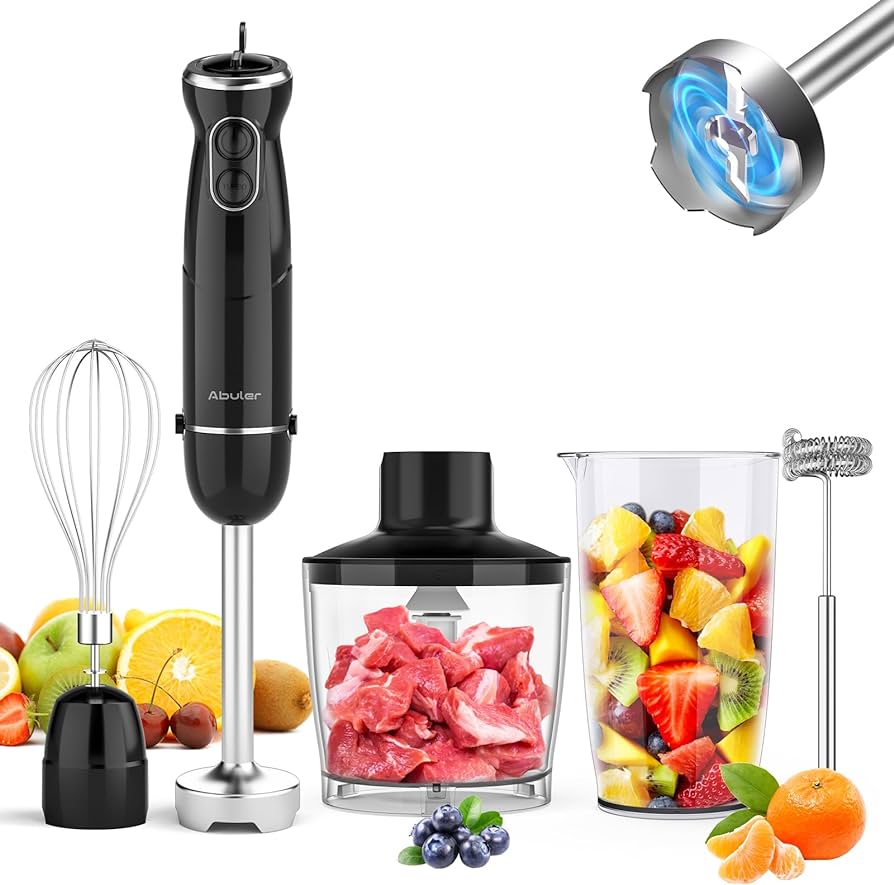 Preparation:
Preparation:
What Should You Do Before Using Your Immersion Blender?
Proper preparation ensures safe and efficient blending.
Check for Compatibility:
Container Suitability:
Depth: Choose a container that is deep enough to prevent splattering and accommodate the length of the blending shaft. Bowls, pots, and large measuring cups are ideal.
Material: Use a sturdy, non-reactive container like stainless steel, glass, or high-quality plastic. Avoid using thin or delicate glass containers that may crack.
Prepare Ingredients:
Optimal Blending:
Size and Softness: Cut large ingredients into smaller, uniform pieces to facilitate even blending. Softer ingredients blend more easily and produce smoother results.
Liquid Addition: Adding a small amount of liquid can help the blending process, especially when working with thick or dry ingredients.
Assembly:
Securing Parts:
Attach Blending Shaft: Firmly attach the blending shaft to the motor unit. Ensure it locks into place securely to prevent it from detaching during use.
Inspect Blades: Check the blades for any signs of damage or dullness before use. Sharp, intact blades deliver better blending results.
 Blending Techniques:
Blending Techniques:
How Do You Use an Immersion Blender Effectively?
Employing the right techniques enhances the performance and efficiency of your immersion blender.
Submersion and Positioning:
Proper Placement:
Fully Submerge: Before turning on the blender, ensure the blades are fully submerged in the ingredients to prevent splattering.
Tilt and Angle: Hold the blender at a slight angle to improve blending efficiency and help incorporate all ingredients.
Starting the Blender:
Initial Blending:
Low Speed: Begin blending at a low speed to prevent splattering and gradually increase to the desired speed. This controlled approach helps achieve smoother results.
Slow Movement: Move the blender slowly around the container, ensuring it reaches all areas. This technique ensures consistent blending and prevents missed chunks.
Pulse and Blend:
Controlled Processing:
Pulse Function: Use the pulse function or short bursts to blend larger chunks or tougher ingredients. This method provides better control and prevents over-blending.
Continuous Blending: For liquids or softer ingredients, continuous blending may be more effective. Keep the blender in constant motion for even results.
Handling Different Foods:
Versatility:
Soups and Sauces: For soups or sauces, blend directly in the pot. Ensure the pot is deep enough to prevent splattering, and blend until you achieve the desired consistency.
Smoothies and Shakes: Use an immersion blender in a tall glass or pitcher to make smoothies or shakes. Add liquids first, followed by fruits and other ingredients, for easier blending.
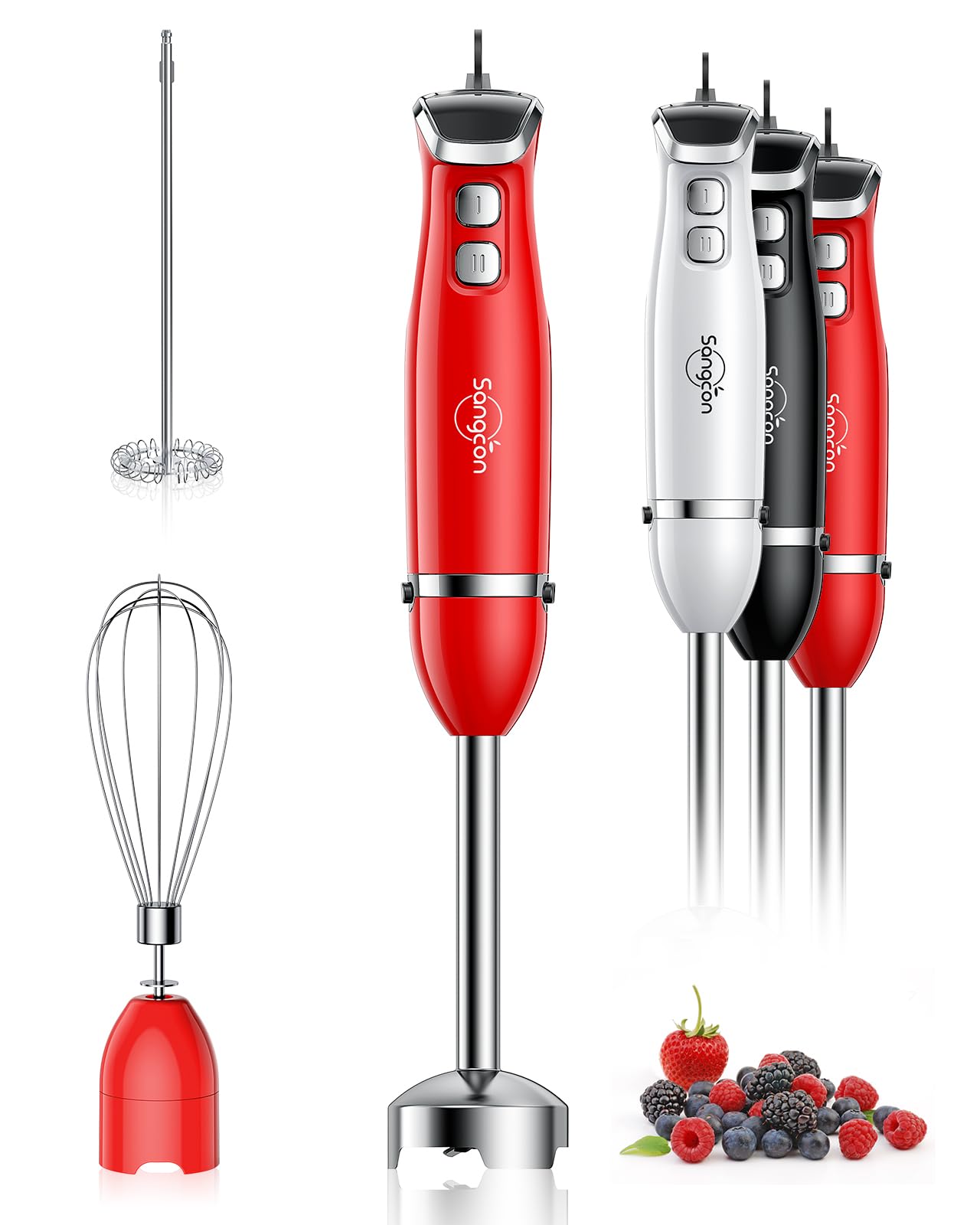 Cleaning and Maintenance:
Cleaning and Maintenance:
How Should You Clean and Maintain Your Immersion Blender?
Proper cleaning and maintenance extend the life of your immersion blender and ensure food safety.
Immediate Cleaning:
Preventing Residue:
Quick Rinse: Rinse the blending shaft immediately after use to prevent food residues from drying and becoming difficult to remove.
Disassemble for Cleaning: Detach the blending shaft from the motor unit before washing. Most blending shafts are dishwasher safe, but check the manufacturer’s instructions.
Hand Washing:
Gentle Cleaning:
Warm Soapy Water: Wash the blending shaft in warm, soapy water using a sponge or brush. Pay special attention to the blades and any crevices.
Rinse Thoroughly: Rinse thoroughly to remove all soap residues. Dry completely before reassembly or storage.
Motor Unit Care:
Electrical Safety:
Wipe Clean: Wipe the motor unit with a damp cloth to remove any spills or splatters. Never immerse the motor unit in water.
Drying: Ensure the motor unit is completely dry before storing. Moisture can damage the electrical components and pose a safety risk.
Storage:
Protective Measures:
Store Securely: Store the immersion blender and its attachments in a secure place where they won’t be damaged. Some models come with a storage case or wall mount for convenience.
Blade Protection: Use a blade guard or cover to protect the blades when not in use. This prevents accidental cuts and keeps the blades sharp.
Safety Tips:
What Precautions Should You Take When Using an Immersion Blender?
Adhering to safety guidelines ensures a risk-free blending experience.
Safe Operation:
Handling the Blender:
Firm Grip: Hold the blender firmly but comfortably while in use to maintain control and prevent slipping.
Avoiding Splashing: Always ensure the blades are fully submerged before starting and stop the blender before lifting it out of the ingredients to avoid splashing.
Electrical Safety:
Cord Management:
Avoiding Liquid Exposure: Keep the motor unit and electrical cord away from liquids to prevent electrical hazards.
Unplugging: Always unplug the blender before cleaning, removing attachments, or if it stops working unexpectedly.
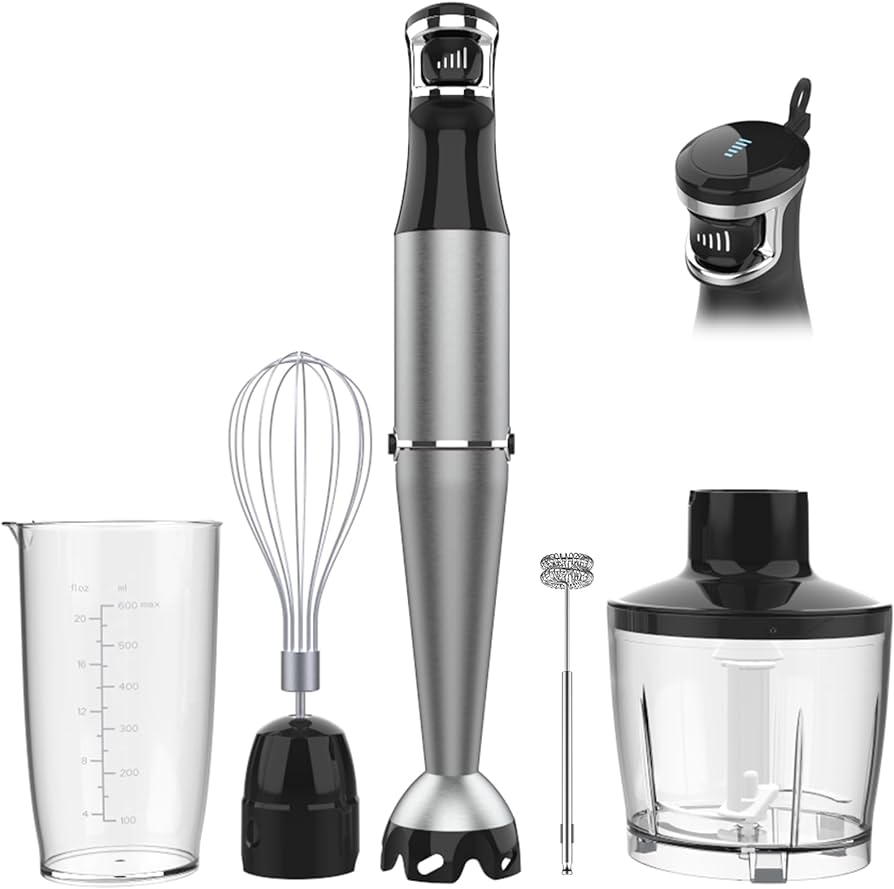 Using Attachments:
Using Attachments:
Compatibility and Installation:
Correct Attachment: Ensure attachments are compatible with your immersion blender model and securely fastened before use.
Careful Handling: Handle attachments carefully, particularly sharp ones like blades and choppers, to avoid injury.
Common Uses:
What Are Some Popular Applications for an Immersion Blender?
An immersion blender is versatile and can be used for various culinary tasks.
Pureeing:
Soups and Sauces:
Creamy Soups: Use an immersion blender to puree soups directly in the pot, achieving a smooth, creamy texture without transferring to a traditional blender.
Tomato Sauce: Blend homemade tomato sauce to achieve a consistent, velvety texture, incorporating all ingredients evenly.
Blending Beverages:
Smoothies and Shakes:
Fresh Smoothies: Quickly blend fruits, vegetables, yogurt, and ice into refreshing smoothies. An immersion blender makes blending single servings convenient.
Protein Shakes: Mix protein powder with milk or water for a smooth, lump-free shake, perfect for post-workout nutrition.
Emulsifying:
Dressings and Mayonnaise:
Salad Dressings: Create emulsified salad dressings by blending oil, vinegar, and seasonings for a consistent mixture.
Homemade Mayonnaise: Make homemade mayonnaise by combining egg yolks, mustard, lemon juice, and oil. The immersion blender ensures a smooth, stable emulsion.
Whisking and Mixing:
Baking and Cooking:
Whipped Cream: Use the whisk attachment to whip cream quickly and efficiently, achieving a light, airy texture.
Batter Mixing: Blend pancake or waffle batter to eliminate lumps and ensure an even mixture, ready for cooking.
Comparing to Traditional Blenders:
How Does an Immersion Blender Differ from a Traditional Blender?
Understanding the differences helps you decide when to use each appliance.
Portability and Convenience:
Ease of Use:
Direct Blending: An immersion blender allows you to blend directly in the cooking pot or serving container, reducing the need for transferring and minimizing cleanup.
Compact Design: Its compact design makes it easy to store and use in small kitchens or for quick tasks.
Versatility:
Multiple Applications:
Attachments: Immersion blenders often come with various attachments for different tasks, such as whisking, chopping, and more, adding to their versatility.
Specific Uses: While immersion blenders are excellent for pureeing and emulsifying, traditional blenders are better suited for large volumes or tasks requiring a more powerful motor.
Maintenance:
Ease of Cleaning:
Simple Cleaning: Immersion blenders are generally easier to clean, with most parts being dishwasher safe and less cumbersome than cleaning a full blender jar.
Less Disassembly: There is less disassembly required, making them more convenient for quick cleaning.
Conclusion
An immersion blender is a versatile and valuable tool in the kitchen, suitable for a wide range of tasks from blending soups and sauces to making smoothies and emulsifying dressings. Understanding its components and functions, proper preparation, and effective blending techniques ensures smooth and consistent results. Cleaning and maintenance, including immediate rinsing, hand washing, and proper storage, extend the lifespan of your immersion blender and ensure food safety. Adhering to safety tips, such as handling the blender securely and avoiding electrical hazards, ensures a risk-free blending experience. Popular uses for an immersion blender include pureeing, blending beverages, emulsifying, and whisking, showcasing its versatility. Comparing an immersion blender to a traditional blender highlights its portability, convenience, and specific applications, helping you choose the right tool for your needs. By following these detailed guidelines, you can maximize your immersion blender’s potential and enhance your culinary creations with ease and confidence.
